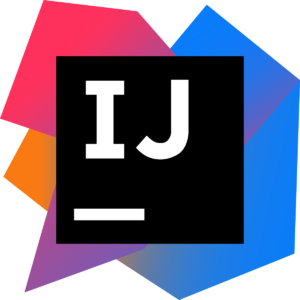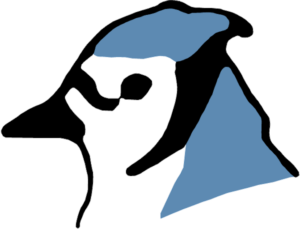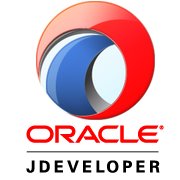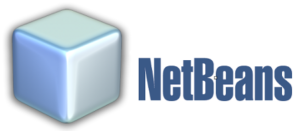Java is one of the most powerful and versatile programming languages. Many of the desktop software and almost all the Android applications that you are using are made using Java. Since its birth in 1995, Java has dominated the programming scene.
Though many experts now believe that Java does not have a very bright future, we think otherwise. There are many commercial and free Java IDEs available, and here we will discuss the best Java IDE to use in 2022.
When Java dominated the market of programming languages and gained the number one position among the best programming languages , a ton of developers designed various IDEs for Java. This made Java easier for newcomers such that they did not face any difficulty in writing Java code and bringing more productivity to the Java community.
Here in this article, we are going to explore some of the best Java IDEs that help developers code in Java.
What is Java?
Created by James Gosling and released on 23rd May 1995,
 Java
is an object-oriented programming language. It is one of the most popular programming languages and flaunts a huge global community. Java was developed by Sun Microsystems, which is now owned by Oracle Corporation.
Java
is an object-oriented programming language. It is one of the most popular programming languages and flaunts a huge global community. Java was developed by Sun Microsystems, which is now owned by Oracle Corporation.
To learn this language in-depth and gain expertise, buy the course here.
Best Java IDE for Java Coding
If you google online Java IDE on the internet, you will get dozens of options to consider. However, due to the sheer variety, choosing the best IDE among the lot might be very confusing. Integrated development environments are designed to assist the developers and enhance their productivity.
Here, in this article, we are going to list some of the top IDEs for Java. You can choose any one of them according to your preferences and project requirements.
1. Eclipse

- Type - General
- Developer - Eclipse Foundation
- License - Open-source
- Platforms Supported - Windows, Linux, macOS, and Solaris
Eclipse is the most popular and widely used integrated development environment for Java. Designed by Eclipse Foundation and first released on 7th November 2007, Eclipse is written in Java, which makes it native to Java. Eclipse is an ideal Java IDE for both beginners and those who already have some experience with Java development.
In Eclipse, you can easily create a new project, and all the projects are saved in a workspace folder by default, from where you can easily open your project file and move it to wherever you want.
Although Eclipse IDE is used extensively for Java projects, it lets developers write code in other programming languages via plugins. These include C, C++, C#, and Python. You can also write code in web scripting languages such as JavaScript and PHP in Eclipse.
Main Features of Eclipse
- It is an easy-to-use Java IDE.
- You can easily shift from one project to another.
- Eclipse comes with thousands of inbuilt plugins.
- It features intelligent auto-code completion.
- The IDE has syntax highlighting.
- It offers live debugging.
- Pre-written code for the main function (Source code Generator) is available.
Pricing
It is free and open-source.
2. IntelliJ IDEA

- Type - General
- Developer - JetBrains
- License - IntelliJ IDEA Ultimate (commercial), IntelliJ IDEA Community (open-source), and IntelliJ IDEA Edu (open-source)
- Platforms Supported - Windows, macOS, and Linux
Released in January 2001, IntelliJ IDEA is an integrated development environment created by JetBrains. It is very popular for its IDEs, and it has created IntelliJ IDEA specifically for Java and JVM-based languages like Kotlin and Scala.
One of the main highlights of IntelliJ IDEA is its extensive plugin support. It helps the developers to add different packages so that they can code in different programming languages and extend the capabilities of the Java IDE. IntelliJ IDEA comes in three variants, namely Ultimate, Community, and Edu.
Ultimate is a paid version, whereas Community and Edu are open-source. If you are a beginner, we will suggest you download IntelliJ IDEA Community. It will serve you well for learning purposes.
By default, IntelliJ IDEA supports only Java and Kotlin, but if you want the IDE to write and execute code for other programming languages, you can use plugins. The main disadvantage of IntelliJ IDEA is that it is not beginner-friendly, and thus if you are completely naïve to IDEs, you might find it difficult to start with the popular Java IDE.
Main Features of IntelliJ IDEA
- It comes with intelligent auto-completion.
- It gas syntax highlighting.
- IntelliJ IDEA supports Android.
- The Java IDE features an inline debugger (live debugger).
- It provides shortcut keys.
- It can detect duplicate code. (Available in the Ultimate version.)
- The IDE comes with an interface for TypeScript (Available in the Ultimate version.)
Pricing
IntelliJ IDEA is available for $49.90 per month per user (billed monthly) and $499 per year per user.
3. BlueJ

- Type - Dedicated (Although support for Stride was added in 2017.)
- Developer - BlueJ Team
- License - Open-source
- Platforms Supported - Windows, macOS, Ubuntu, and Debian
Written in Java, BlueJ is an open-source integrated development environment for Java. It is one of the best IDEs for beginners and is specially designed for learning purposes. The main purpose of the BlueJ team was to make a Java IDE that has all the essential features for facilitating the learning and teaching of object-oriented programming languages.
Nonetheless, it is also suitable for small-scale software development. BlueJ has a very simple interface, so you won’t find any difficulty when you operate it. Also, it is very lightweight software, which makes it run smoothly even on low-end computers. In addition to Java, BlueJ also supports Stride , a frame-based programming language.
Pricing
It is free to use.
4. DrJava

- Type - Dedicated
- Developer - JavaPLT group at Rice University
- License - Open-source
- Platforms Supported - Linux, macOS, and Windows
DrJava is another free-to-use IDE that is specifically designed for students and beginners. It allows them to focus more on the code and less on the IDE functionality. It is lightweight and can run smoothly even on systems with a low-end processor.
The JavaPLT group at Rice University used Java to develop DrJava. One of the main features of DrJava is its ability to interactively evaluate Java code from a console and show the output via the same console.
Many advanced learners or developers do not prefer lightweight IDE for big projects because they do not provide that many features, but DrJava is an exception. Despite being a lightweight IDE, it provides many convincing features for advanced developers to code with it.
Main Features of DrJava
- It is an extremely lightweight IDE.
- DrJava comes with an intelligent code editor.
- Source-level debugging is available.
- It comes with support for JUnit.
Pricing
Free.
5. MyEclipse

- Type - Dedicated (Java EE)
- Developer - Genuitec
- License - Commercial
- Platforms Supported - Windows, Linux, and macOS
MyEclipse is a very powerful IDE that comes with a galore of advanced features. It was developed by Genuitec, which is a tech company that comprises the founding members of the Eclipse Foundation. It is built upon the Eclipse platform and hence, the name. MyEclipse is designed to write Java and AJAX code, which makes it suitable for web development in Java.
Main Features of MyEclipse
- It provides support for Eclipse packages.
- MyEclipse features database tools.
- It comes with a visual web designer.
Pricing
MyEclipse offers three different editions, as follows:
- Standard: $35 per user per year
- Professional: $70 per user per year
- Spring: $165 per user per year
6. JDeveloper

- Type - General
- Developer - Oracle Corporation
- License - Open-source
- Platforms Supported - Windows, Linux, and macOS
JDeveloper is an integrated development environment created by Oracle Corporation, which is the owner of Java. It is a special IDE that is specifically designed for Java. However, apart from Java, you can also code for XML, SQL, JavaScript, and PHP in JDeveloper, which is a great help for back-end web development . JDeveloper comes in three editions, namely Java Edition, J2EE Edition, and Studio Edition.
Main Features of JDeveloper
- It has a powerful code editor.
- JDeveloper provides integration support with Oracle Application Development Framework.
- The Java IDE provides support for unit testing.
- Version control is available.
Pricing
It is a free-to-use IDE.
7. NetBeans

- Type - General
- Developer - Apache Software Foundation
- License - Open-source
- Platforms Supported - Windows, Linux, Solaris, and macOS
NetBeans is one of the top three Java IDEs (The other two are Eclipse and IntelliJ IDEA). It is an open-source IDE and the official IDE for Java 8. NetBeans offers support for all major operating systems. Thus, it does not matter if you are on Windows, macOS, Linux, or Solaris. You can download it and build high-quality Java applications with it.
Apart from Java, NetBeans also provides extensions for other popular programming languages, such as PHP , C, C++, HTML, and JavaScript. Thus, you do not need to switch IDEs if you are working in many of these languages.
The first stable version of NetBeans came out in 1997, and at present, it has thousands of in-built and third-party plugins to boost the productivity of the software development process.
Main Features of NetBeans
- It supports various types of Java, such as Java SE, Java ME, web, EJB, and Java mobile applications.
- It provides support for many popular version controls such as CVS, Subversion, Git, Mercurial, and ClearCase.
- NetBeans contains all the essential Java modules.
- It provides a GUI tool to design Swing GUIs.
- It is highly compatible with all types of Java development, and that's why it provides a JavaScript editor for extended support for JavaScript , Ajax, CSS, and HTML for Java-based web applications.
- Like other IDEs, it also provides all the necessary features such as syntax highlighting, auto code completion, error highlighting, and so on.
Pricing
It is free to use.
8. JCreator

- Type - Dedicated
- Developer - Xionx Software
- License - Open-source
- Platforms Supported - Windows and Linux
If you have ever worked with Microsoft Visual Studio, then you can find JCreator very similar. It is a proprietary Java IDE created by Xionx Software, which is only available for Windows. Although the Lite-Pro Edition is only designed for Windows, its PRO and LE versions can run adequately on Linux using compatibility layer tools such as Wine .
So, if you have a paid version of JCreator, you can run it on Linux using any compatibility tool. Although JCreator provides all the basic and some advanced features, it still misses some advanced features and the plugin system offered by the paid versions of IntelliJ IDEA and Eclipse.
Main Features of JCreator
- It has options to customize the color schemes.
- It comes with project templates for quick code writing.
- JCreator has an intuitive interface for code debugging.
- Its UI customization is similar to MS Visual Studio.
- It runs your Java application as an applet, and that's why it does not require any JRE to execute the Java code. This makes JCreator faster than other Java-based IDEs.
Pricing
JCreator provides three different editions:
- Lite Edition: $35
- Pro Edition: $89
- Lite-Pro Edition.
9. jGRASP

- Type - Dedicated with support for some other programming languages
- Developer - jGRASP Team
- License - Open-source
- Platforms Supported - Windows, Linux, and macOS
jGRASP is a well-known cross-platform and lightweight Java IDE. Consequently, it is ideal for low-end computers. Generally, all IDEs consume extensive CPU resources. Thus, if you have a system with low specifications, you could come across problems while using full-fledged Java IDEs such as Eclipse, IntelliJ, and NetBeans.
This Java IDE is specially designed to generate visualizations improving the software comprehensibility. Using this IDE, you can create static visualizations of the code at runtime. This feature of jGRASP is so popular that you can also find the jGRASP plugin for Eclipse, IntelliJ, and Android Studio.
Main Features of jGRASP
- It is a lightweight IDE.
- It can generate data structure visualizations at runtime.
- jGRASP supports CSD (Control Structure Diagram), which helps in putting auto-indentation.
- It also supports extensions for other languages, such as C, C++, Objective-C, and VHDL.
Pricing
jGRASP is free to use.
10. Greenfoot

- Type - General (Also provides support for Stride)
- Developer - Michael Kölling, Computing Education Group, and King's College London
- License - Open-source
- Platforms Supported - Linux, Windows, and macOS
Greenfoot is a minimalist IDE and is highly recommended for beginners with no prior experience with any integrated development environment. This Java IDE is primarily designed for educational purposes, and it can handle all the simple and some complex Java applications that include graphics.
If you are into game development using Java, then Greenfoot is for you. It takes care of the low-level programming and automatically generates Java code for your game world and actors. It's not like other Java IDEs where you can code for different programming languages. Here, you are restricted to graphics game designing in Java and Stride.
Main Features of Greenfoot
- It is specially designed for educational purposes.
- It has backing from Oracle Corporation.
- With Greenfoot, you can design graphical games.
- It is a fun and intuitive IDE to learn Java coding by building games.
Pricing
It is free to use.
Conclusion
That sums up our list of the best Java IDEs. There are many Java IDEs, but these are the best ones to program and develop software in Java. If you ask us to pick an IDE for you, we will suggest going with Eclipse or IntelliJ IDEA if you have a system with a fast processor and a good amount of RAM. BlueJ, jGRASP, or DrJava, on the other hand, are excellent if you have a low-end system.
People are also reading:
- Features of Java
- Java Cheat Sheet
- What is JRE?
- Top Java 8 Interview Questions and Answers
- Core Java Interview Questions
- Java vs Kotlin
- Best Java Frameworks
- Java vs JavaScript
- Top Java Blogs





Leave a Comment on this Post